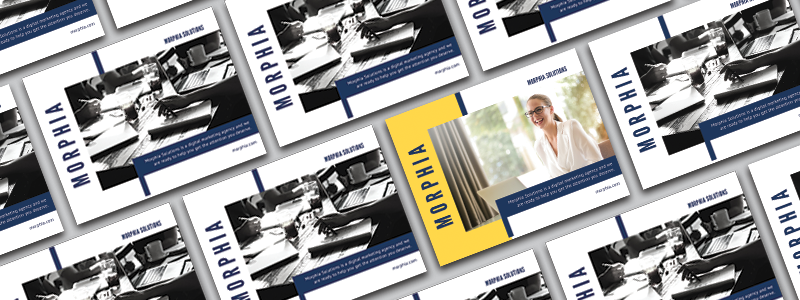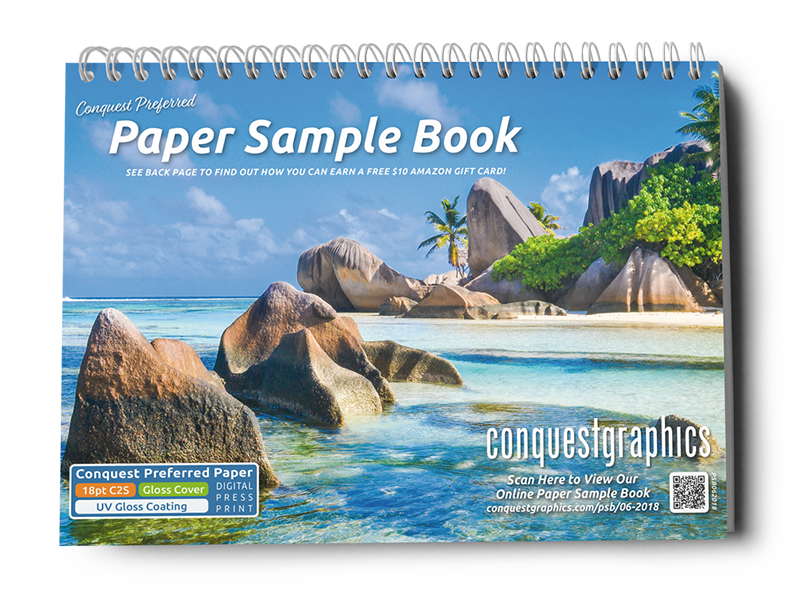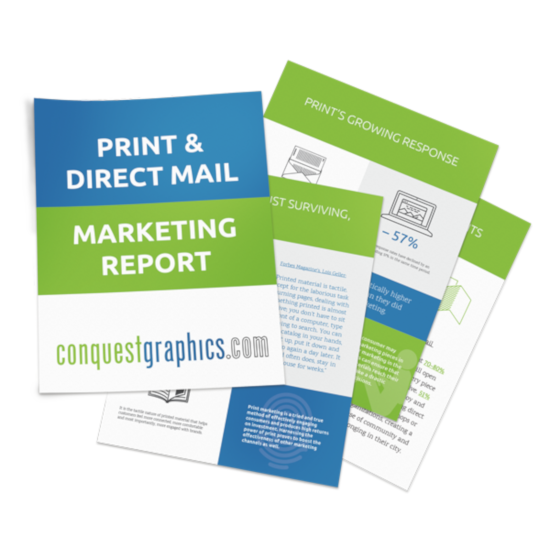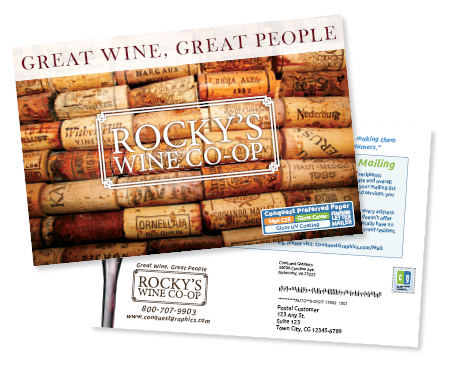
Print marketing is the most powerful tool your business can use to boost brand awareness, increase customer retention and drive sales. This is because people enjoy and trust something that is tangible and unlike digital marketing efforts, print marketing can’t be blocked or deleted with one click.
In order to create marketing materials that stand out, set you apart from your competitor and deliver better results, you’ll need to think creatively. Luckily, we have some proven ways you can make the most out of your print marketing and create materials your audience won’t be able to ignore.
Figure Out Who Your Audience Is

Your print marketing will stand out more to those who it is made for. Figure out who your target audience is to help guide you in choosing the right images, copy and more for your printed advertisements.
Who is your current audience? Understanding who your customers are is the key to determining who your target audience is. Look at what makes up your most successful customers. Does your business cater to families with children or to middle-aged executives? Are they new homeowners?
Choose The Right Images
The images within your print marketing are a visual representation of your products, services, story, and your overall brand. They evoke strong emotional feeling and are what makes someone stop and look at your print advertisement.
The images you choose to represent your company needs to be impactful and it is important to deeply understand your target audience and what message you want to convey. Once you have figured out who your audience is, ask yourself these following questions to better determine your marketing message:
What is your marketing message goal? – What feelings do you wish to evoke in your potential buyers? Images can reflect many different messages and feelings, so be sure to include images that clearly represent what your marketing message goal is.
Is your location important? – Do you depend on local traffic or is your business a destination for people to visit on their travels? If your location matters for your audience, include images of landmarks or a beautiful view.
What is unique about your brand? – Are you selling useful, time saving products or are you promoting relaxation and luxury? Images help communicate your brands message. Show your audience what makes your company unique through your imagery.
Once you have narrowed down your target audience and the feeling or message that you want to communicate, it is then time to create and choose the right images. It is important to note that although images are what draws your viewer in, be sure to avoid the use of too many images. This can confuse and be overwhelming for you viewer. You should always be sure to have a good image to copy ratio.
Use High-Quality Images
Fuzzy or less than professional shots, will send the message that your brand is amateur or takes little notice to the details. Make it a goal to utilize high-resolution and crisp images. Images print best when they are at least 300 dpi in resolution. Seek professional help or take advantage of a stock image database to ensure and maintain the best quality.
Have a Strong Focal Point
Including a focal point within your images, attracts the readers eye while also creating a place for their eye to rest. Avoid images with clutter and think clean and bold. This will ensure that you are generating positive and quick engagement.
Include People in Your Images When Possible

People respond best to other people, and more specifically people they relate to. Be sure to represent a diverse group who relates to your target audience. This will ensure that there’s a level of likeness achieved through your images. It is also important to include images of people who are reflecting a feeling you want your audience to feel when interacting with your brand. For example, photographs of happy people reflect a happy feeling.
Get an Outsiders Opinion
Testing your images on other people before you implement them within your print marketing can help make sure you are achieving your marketing message goals and that your images are being communicated clearly. Consult your team or an honest friend and ask them "how does this image make you feel?” or “what do you think this image is saying?”
Consider the Copy Carefully
Carefully thought out and good copy can transform your regular products into products your audience needs to buy right away. Consider why your brand is the best, and why your products or services are better than your competitors and then tell your audience why in your copy while following these guidelines below.
Use Consistent Language
The language you use in your marketing is part of your brand and brand consistency creates better brand recognition and promotes trustworthiness. Just like you need to use the same logo on your business cards, brochures, and posters, you need to use consistent language as well.
Use Powerful Headlines
A good headline grabs the reader's attention and persuades them to read further. For printed materials that contain pages of copy, like catalogs, booklets or brochures, it's important to also use subheadings to break down information and act as a navigation tool for your audience.
Include a Strong CTA

A call to action or CTA, is the use of words or phrases that prompt an immediate response and encourages your audience to act on your marketing message. This could include deals that can’t be ignored or intriguing text that drives your audience to your website.
Proofread Everything
Be sure that your copy is free of misspelt words and grammatical errors. Have multiple eyes proofread your copy and don’t limit your copy editing to your word processor’s spell check function.
Choose the Right Font
The three most important decisions when setting up the fonts that will work best for your print marketing campaign are typeface, sizing, and color. How do you know which direction to take when there are so many options available? It can be tempting to go big, bold, and wild to set yourself apart from the competitors, but how do you know when this is a good idea—if ever?
The Right Typeface

There are thousands of fonts and typefaces and each one can have a different impact on your marketing. Your priority should always be legibility and then choosing a style that fits your message. Times New Roman, Helvetica, and Arial are three popular fonts that have proven to show success in attracting and retaining customer attention. Their appearance is a great balance of class without detraction.
However, depending on your brand and your audience you should consider other fonts as well. If your brand has a typeface that is clear and consistently shows on your website, be sure to use your branded typeface. If your print marketing is a toy catalog, a Geometric Sans, like the font Futura, offers an easy to read and playful style while an Old-Style typeface shows sophistication and seriousness.
The Right Size
For the body of your copy, a good rule of thumb is to use a font size that is 10-14 point to avoid your reader from having to squint to read your print marketing. Your company name and headline should be larger and bold. You’ll then want to balance fitting the necessary information in one place while avoiding the text seeming cramped. Bigger font sizes will work best for highlighting the most valuable information that you want your reader to see first, and smaller sizes work best for the details.
The Right Colors

Colors have different meanings and evoke different feelings. Be sure that the colors you choose for your font revolve around the tone of your advertising campaign and your brand's identity. Materials with less text can benefit from colorful fonts while colors are often limited to just the headlines for catalogs and newsletters, leaving the body of the copy monochrome.
Also, it is important to take your printed design background color into consideration when choosing your font color. For example, a neon orange font on a green background can be painful on the eye while a white font on a blue background can pop and attract the eye.
Consider the Feel of Your Print Materials
Textures add dimension to your print marketing campaign, everything from the paper weight you choose to the coating option, play a role in how your audience will feel your print advertisement.
Thicker paper for postcards, business cards and catalog covers are ideal for durability and to convey importance. While a thinner paper is great for brochures so your audience can unfold it with ease.
A matte or satin coating on your printed materials offer a smooth and timeless feel while a gloss coating offers a sleek feel that catches your eye. You can even use a spot coating to highlight certain images and text.
Get Creative with Inks
Getting creative with inks can truly grab your audience's attention. Consider metallic inks like silver and gold to make a big impression on your audience. When it comes to metallic inks, you aren’t subject to standard gold or silver either. You can virtually take any color and add a metallic underlay to it.
Personalize Your Print Marketing with Variable Printing

Everyone engages more with something that is customized just for them so why not personalize your printed marketing materials to be tailor made for each of your recipients? With Variable Data Printing, you can easily, and affordably achieve this personalization.
In Variable Data Printing or Variable Image Printing, the content including names, images and more are changed from one printed piece to the next. This allows personalization within a digital press run, a process referred to as mass customization or 1-to-1 marketing.
There is a wide range of creative ways you can use Variable Printing including:
Special Offers - Include unique barcodes or QR codes on your postcards for each person in your audience to enjoy a special offer just for them.
Special Gifts - Design faux magazine covers and add your prospect’s name in one of the teasers for them to hang up and keep forever.
Membership Cards - Create cards with your customer’s name and unique ID they can use for special promotions.
Seating Cards - Have a wedding or formal event? Print names and even photos on small, colorful seating cards. If it is a corporate event, you can add your logo for a branded experience.
Using these techniques and taking advantage of variable printing technology can help you bring your next print marketing campaign to the next level.
Now that you're ready to make your print marketing truly stand out, you are ready to begin a successful marketing campaign. Explore some of our most popular marketing materials or click below to take advantage of our free resources including our Paper Sample Booklet! This unique booklet allows you to see and feel for yourself some the options we offer here at Conquest Graphics.
Get Your Free Resources Today!









